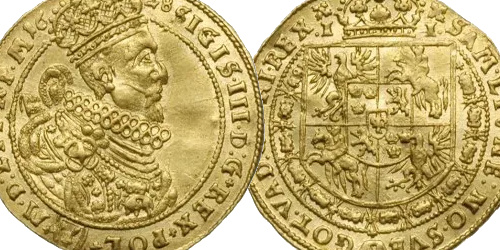Rare issue covering the extremely turbulent history of Poland, which is also a witness of the fights between Augustus II the Strong and Stanisław Leszczyński for the throne of Poland.
Variety with reverse legend LIT and the initials LP, of Ludwig Konstantin Pociej, mintmaster of the mint in Moscow in 1706-1707.
Obverse scratched.
Crown coins of Augustus II the Strong were minted at the Leipzig mint in 1698 (trial issue), 1702, 1704, 1706. They belong to the Polish mint de facto, but not de jure (due to the lack of consent of the Sejm). In turn, the Lithuanian six-pieces come from the years 1706-1707. Like the crown sixes, they were embossed on a cylindrical minting machine. Not in Leipzig, however, but in Moscow - at the Admiralty Mint. They are decorated with the initials of the then Lithuanian treasurer, Ludwik Konstanty Pociej, "L - P" and his coat of arms, Waga.
Lithuanian sixes were made of low-grade silver. According to today's estimates, they contained only less than 50% of the pure metal assumed for sixth graders by the ordinance of 1658 (1.305 g), i.e. approximately 0.6-0.7 g of silver. The purpose of the Moscow issues was to pay the army of the Saxon faction stationed in Lithuania.
In 1707, however, supporters of Stanisław Leszczyński gained the upper hand in Lithuania and Ludwik Pociej's sixes were withdrawn from circulation, which caused losses to their owners. The treasurer's initials "L - P" began to be translated mockingly as "people cry".
The general iconographic scheme of the Crown and Lithuanian sixties is similar. On the obverse of the coins there is a portrait of the monarch and a ring inscription with the Polish spelling of the king's name - Augustus II, not Frederick Augustus I (which were the names Wettin used as a Saxon elector). On the reverse, inside the rimmed inscription, under the crown, there was the nominal value "VI", the coat of arms of Poland, Lithuania, Saxony and the Wettin family and the initials "EP - H" of Ernest Piotr Hecht, mintmaster of the Leipzig Mint (on crown sixes) or the initials "L - P" and the coat of arms of the Lithuanian Treasurer's Weight (on Lithuanian sixes).











